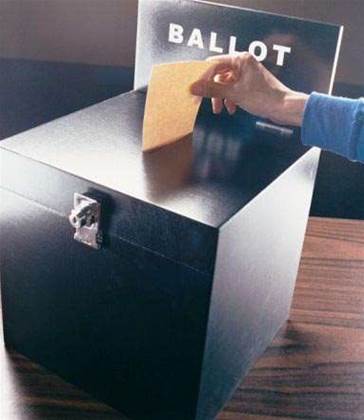
However, to date, e-voting deployments have largely been instituted to address specific problems with traditional paper voting rather than out of a desire for a widespread increase in accuracy, ease of use, efficiency and cost savings.
In August the Australian Electoral Commission (AEC) announced it would be, for the first time, enabling electors who are blind or have low vision to lodge an independent and secret vote at the 2007 federal election. This will affect an estimated 300,000.
In September the AEC announced that the Australian Defence Force and Defence civilian personnel deployed on operations in Iraq, Afghanistan, Timor Leste and the Solomon Islands would have the opportunity to take part in a secure electronic voting trial.
The trial, aimed at cutting logistical overheads, would provide Defence personnel in these remote operational locations with the capability to vote in the upcoming Federal election wherever they had access to secure Defence computing and communication facilities.
However, as e-voting can involve the transmission of ballots and votes via telephones, private computer networks, or the Internet, there has been controversy that electronic voting can be more easily subject to electoral fraud.
The question of how to manage electoral fraud is one of the greatest inhibitors to the mainstream adoption of e-voting.
To make e-voting a reality for the rest of the nation, what state, local and federal governments need, are anti-fraud systems which are built upon good quality, integrated, data.
Anti-fraud systems: what they do
At its simplest level, an anti-fraud system needs to monitor transactions. It checks in real-time the parties (in this case, the voters) in a transaction (the act of voting) against industry watch lists (the electoral role), and reconciles the properties of the transaction—such as number of times a registered voter has cast a vote, where they have voted and where they are registered to vote — against the registered voter’s record to see if anything needs to be reported or investigated.
The next level of anti-fraud system searches for patterns, trends, and linkages that provide more subtle indicators of suspicious behaviour. It should also model how an individual or entity is likely to behave, based on previous behaviour, industry peer group, and geographical peer group, to see if anything deviates from the norm.
Why data matters to anti-fraud processes
Complex analytic processes are only as effective as the quality of the underlying data. Good data, readily available, can help ensure that electoral scrutineers don’t waste time on false positives. At each stage in an investigation, from initial flag-down to conviction, data plays a pivotal role. In order to make rapid and informed decisions, scrutineers need different data at each stage. Data volume will grow at each alert progression, with transactional and historical data coming from multiple systems inside and outside the organisation.
Good data—and how to get it
There’s no shortage of data—but what scrutineers need is good quality data, intelligently presented in a timely manner. Good data must come from the right sources, and be available at the right times, and must be “normalised” and centralised correctly, so that it’s consistent across different systems.
To pick up on potentially fraudulent behaviour they also need data integration – the combination of data residing at different sources and providing the user with a unified view of these data.
Within a good anti-fraud solution combining the above, management-level reports on data quality, data measurement and monitoring, scorecards to track data quality improvements over time, and data grading are also needed.
Drill-down reports are also desirable as these allow scrutineers to zoom in from high-level views to inspect low-quality, high anti-fraud risk data records one by one.
Build anti-fraud solutions on a foundation of good-quality data
Governments looking to implement e-voting must learn to demand sophisticated and flexible anti-fraud solutions. To have a top-notch anti-fraud system, a platform of integrated, high-quality data is needed. By working with the highest-quality data, electoral commissions can ensure their anti-fraud systems are working at the highest level resulting in true, accurate electoral results.
Laurie Newman is managing director for Informatica A/NZ.




_(22).jpg&h=140&w=231&c=1&s=0)




_(26).jpg&w=100&c=1&s=0)

 iTnews Executive Retreat - Security Leaders Edition
iTnews Executive Retreat - Security Leaders Edition











_(1).jpg&h=140&w=231&c=1&s=0)



